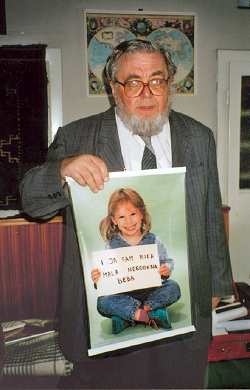
.jpg) F. M. Britto
F. M. Britto
.jpg)
That night he had a dream. Stojan Adasevic saw a ground full of beautiful children and youngsters, playing and laughing merrily. As soon as the children saw him, they ran away frightened.
A man in black and white dress stood far away, silently staring at Adasevic.
That dream came repeating every night. And every time Adasevic woke up terribly sweating. He could not further sleep.
“Who are you?” one day Adasevic asked that man in black and white dress.
“I am Thomas Aquinas. But why don’t you ask me who these children are?” came the response.
Educated in communist schools, the Serbian doctor had not known that Catholic saint.
“Who are these children?” he enquired.
“These are the children you had killed by your abortions,” responded Saint Thomas Aquinas.
Doctor Adasevic had performed nearly 48,000 abortions in 26 years, sometimes up to 35 per day. And he became famous as the renowned abortion doctor in his country Yugoslavia.
The very next day his cousin visited Adasevic in the hospital with his four months pregnant girl friend. She wanted to get her ninth abortion. That was not something unusual in the Soviet bloc countries.
The medical text books of the Communist regime taught that abortion was simply the removal of a blob tissue. But the Catholic Church teaches that life begins at the conception. The ultrasounds allowing the fetus to be seen had arrived much later.
This time Adasevic did not chop the fetus piece by piece with his usual Dilation and Curettage (D&C) method. But he removed it as a single mass. The baby’s heart then came out beating.
“I realized then that I had killed a human being,” confesses Adasevic.
After these two horrific experiences, Adasevic bluntly informed the hospital authorities, “I will no more perform abortion.”
That was something very strange in Communist Yugoslavia. No doctor there had refused to perform abortion on moral ground.
The Communist government and the hospital then dealt with him very severely. His salary was cut half, his daughter was fired from her job and his son was not allowed to enter the university.
When Adasevic was finally about to buckle under the atheist government persecution, Saint Tomas Aquinas appeared to him smiling in a dream and assured him, “You are my good friend. Keep going, Adasevic.”
Completely discontinuing performing abortion, Adasevic then engaged himself in the pro-life movement. Since Communism is long dead in Yugoslavia, today Adasevic has become the most important pro-life leader in his country.
In his documentary “The First Hour”, Adasevic explains his conversion. The Spanish daily “La Razon” published an article on the conversion of the former “champion of abortion.” Adasevic has narrated his story in many magazines and newspapers of Eastern Europe. Since then he has returned to his childhood Orthodox Faith. Having a strong devotion to Saint Thomas Aquinas, he has been constantly reading the saint’s writings.
“There is no such thing as an ‘unwanted child’; there are only unwanting parents".